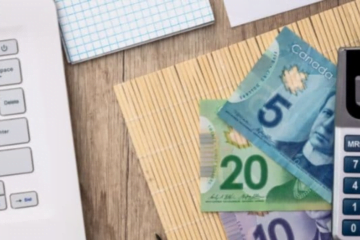So, you are thinking of declaring bankruptcy for the first time. Like many people, life’s circumstances have brought you to this place. Whatever the reason, you are reaching out for help.
In Canada, bankruptcy is a legal process governed by the Bankruptcy and Insolvency Act. It helps debtors who are unable to pay back what they owe. Debtors in distress can apply for a variety of insolvency proceedings with the help of a Licensed Insolvency Trustee.
These insolvency options provide relief from the heavy-weight that debt can put on your life. Bankruptcy is one of the most recognizable insolvency options available in Canada.
Qualifying for bankruptcy is simple:
- You need to owe at least $1,000.
- You must be insolvent, meaning you are incapable of repaying your debts when they come due.
However, if you qualify for bankruptcy, this may not be your only and/or your best option. Depending on your finances and several other factors, you may prefer to file a Consumer Proposal, a division 1 proposal or one of the many other debt help solutions.
A Licensed Insolvency Trustee such as LCTaylor can help you review all of your options and decide on the best course of action for your unique situation.
If you are struggling with your debt load, this podcast will give you a guideline as to when to reach out for help.
Advantages of Bankruptcy
If you are already considering bankruptcy, you probably know that there are advantages. When you file for bankruptcy you receive:
- An automatic stay of proceedings: This means you get immediate protection from your creditors. They can no longer contact you, take legal action against you or garnish your wages.
- Your debts are erased: With the exception of a few specific debts (exemptions listed below), all of your debts from unsecured lenders will be eliminated. Bankruptcy will also provide you with an opportunity to make a decision whether or not to retain certain secured debts.
- Your credit rating will be improved: Six years after the completion of the bankruptcy, the bankruptcy information will be removed from the credit bureau. However, if you are considering bankruptcy now, chances are that your credit rating has already suffered considerable damage. Once you are discharged from bankruptcy, hopefully in 9 months, and in spite of the fact that the bankruptcy may still be noted on your credit rating, you will be a better credit risk to potential lenders than you were prior to bankruptcy, because you will be free from that overwhelming pre-bankruptcy debt.
- You will be able to retain possession of your essential assets: registered RRSP’s and pensions, your personal effects and household furnishings, and in most cases, your house and your car, tools of your trade, etc.
- Payments during our bankruptcy will be affordable: Payments during the bankruptcy are based on your ability to pay, not the amount of your debt.
- You will get a fresh start!

Here are the exemptions to bankruptcy — the debts that do not qualify to be discharged by the bankruptcy process:
These include:
- Child support and alimony payments.
- Student loans, if the loan is less than 7 years old.
- Fines, fees and penalties of a court of law..
- Any debt incurred while participating in fraudulent activity.
- Any debt resulting from misrepresentation.
How to Declare Bankruptcy
Now that you know what declaring bankruptcy entails, let’s talk about how to do it.
Step 1 – Contact a Licenced Insolvency Trustee (LIT)
The first step you must take when declaring for bankruptcy is to find and contact an LIT. In Canada, the federal government requires that only a Licensed Insolvency Trustee can administer a bankruptcy.
Step 2 – Set up an initial consultation with your LIT
Here your LIT will gather all of the information that they need to advise you. Your LIT will not only be able to tell you if bankruptcy is the best option for your situation, but they will discuss with you the other solutions that could work for you. They will review your situation in-depth, and explain all of the options available to you in your present situation. You and your Trustee may determine that there is a solution other than bankruptcy that will work better for you and your family.
At LCTaylor your initial consultation with one of our experienced LITs is free!
Step 3 – File for Bankruptcy
Once your LIT has everything they need and you have made your decision, they will prepare the paperwork for your Assignment in Bankruptcy. They will explain in detail your duties during bankruptcy, as required by the Bankruptcy and Insolvency Act of Canada.
After you have reviewed the paperwork signed the necessary documents, your LIT will file the bankruptcy with the federal government and inform your creditors.
Step 4 – Fulfill your obligations
Once you have filed, you will be required to provide your LIT with monthly income and expense statements for the duration of the bankruptcy, along with proof of income (pay stub) and proof on non-discretionary expenses.
You will be required to make a monthly payment, based on your ability to pay, to the Trustee for the duration of the bankruptcy.
You will be required to attend two credit counselling sessions with your LIT. These sessions are designed to help you get a handle on your finances and plan for your future.
You will also be required to keep your Trustee informed of your mailing address and contact information, and to provide your Trustee with the necessary information to allow them to file your pre-bankruptcy (January 1st to the date of bankruptcy) and post-bankruptcy (date of bankruptcy to December 31st) tax returns.
And that’s it!
In most cases, a first bankruptcy is discharged in just nine months. In less than a year, you will be back on your feet and able to get on with your life!
If you need help declaring bankruptcy in Winnipeg or declaring bankruptcy in Manitoba or South-Western Ontario, then contact LCTaylor. Our experienced LITs will provide you with the guidance you need to solve your debt issues. Contact us for a free consultation, and get on your way to a fresh start today!
















